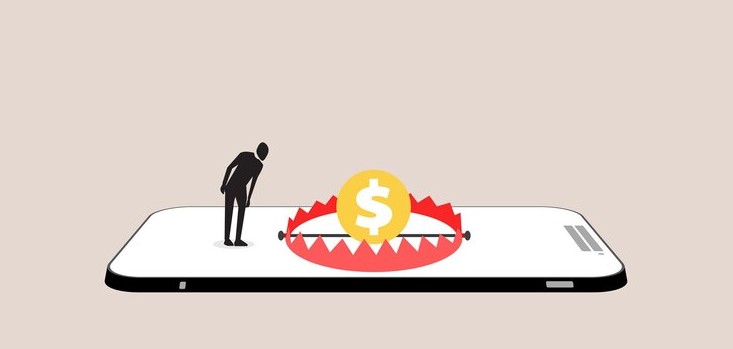Understanding consumer trends is crucial for gaining insights into the patterns that shape American spending behavior. These tendencies not only impact the marketplace, but also significantly influence the debt landscape in the United States. As consumer tendencies shift, so to do the strategies and challenges faced by individuals managing their financial obligations.
This blog post explores the relationship between evolving consumer behaviors and how they affect debt across the nation. By examining recent trends in food and dining out, digital commerce, and sustainable consumption, we can better understand the underlying dynamics that impact American debt profiles.
Trends in food spending

Over time, the way Americans allocate their finances towards food has undergone a noticeable transformation. A growing preference for convenience and experiences has significantly shaped dining habits. The rise of food delivery services and increased frequency of dining out are notable examples of this shift. These conveniences, while offering time-saving benefits, often come at a premium cost.
The trend of eating out more frequently can lead to increasing expenses that some individuals may not adequately plan for. This can, inadvertently, contribute to mounting credit card balances. Consumers, eager to save time or indulge in culinary experiences, may overlook the gradual accumulation of higher spending in this category.
The cultural shift towards higher consumption of takeout and restaurant meals reflects a broader societal trend of valuing experiences over material goods. While this enriches daily life, it requires vigilant budgeting to keep financial health intact, ensuring that the enjoyment of such experiences does not lead to significant debt accumulation.
Effects of dining habits on credit card debt
Frequent dining out, driven by evolving consumer preferences, directly influences credit card utilization. Americans’ penchant for visiting restaurants and ordering food online frequently results in transactions predominantly conducted through credit cards. This behavior can lead to difficulties when monthly statements arrive, especially if payments exceed budgetary expectations.
Interest rates on unpaid credit card balances can exacerbate debt woes, as dining expenses—seemingly minor when incurred—accumulate over time. The convenience of swiping a card often masks the financial impact until expenditures pile up, leading to potential financial strain. Moreover, dining-related deals and promotions, while enticing, can inadvertently encourage spending beyond one’s means.
Managing these expenses requires strategic planning, such as setting specific dining budgets or opting for cashback credit card options specifically tailored for dining categories. Awareness of spending habits plays a pivotal role in preventing credit card debt from spiraling due to food-related expenditures, helping individuals maintain financial stability.
Impact of grocery shopping trends
Grocery shopping behavior has also experienced dynamic shifts, significantly affecting household budgets. Consumers are now more inclined to prioritize convenience, with an uptick in online grocery ordering and home delivery services. While these options cater to busy lifestyles, they often come with additional fees and potential for impulse purchases, slightly inflating grocery expenses.
The propensity to experiment with niche or premium food products also contributes to increased grocery bills. As consumers embrace organic, locally-sourced, or gourmet options, their desire to support sustainable practices may inadvertently lead to higher costs. These preferences, while beneficial in certain respects, necessitate careful financial planning to avoid unsustainable expenditures.
Digital commerce and its financial impact
The digital revolution has profoundly transformed consumer behavior, especially in how Americans shop. E-commerce continues to expand, enticing consumers with irresistible convenience, wide product selections, and competitive pricing. However, this surge in online shopping habits has financial ramifications that warrant attention.
The ease of digital transactions can encourage impulse purchases, leading to increased spending that consumers may not immediately recognize. The allure of flash sales and limited-time offers can skew perceptions of need versus want, prompting consumers to make purchases they might not have planned. Online shopping, thus, can lead to budgetary oversights.
Subscription services and recurring payments
The rise of subscription services has introduced another layer of complexity to household financial management. From entertainment platforms to meal kits and monthly boxes, subscriptions fulfill various consumer needs but can lead to unintentional overspending if not regularly reviewed and managed.
Autopay features, while convenient, may result in consumers losing track of recurring payments, gradually increasing their financial commitments. Services that once seemed necessary can become redundant over time, potentially straining monthly budgets. Regularly evaluating the necessity and value of subscriptions is critical to prevent unnecessary financial burdens.
Social media influence on spending
Social media platforms have become vital influencers in consumer spending, often driving purchasing decisions through targeted advertising and influencer marketing. The ubiquitous presence of social media shapes consumer desires, introducing new trends and products that can influence buying behavior significantly.
Advertisements tailored to individual interests and activities magnify the temptation to purchase, often leading to unplanned expenditures. The pressure to keep up with trends showcased on these platforms can challenge traditional budgeting practices, compelling consumers to spend more on appearance-based products or lifestyle enhancements.
